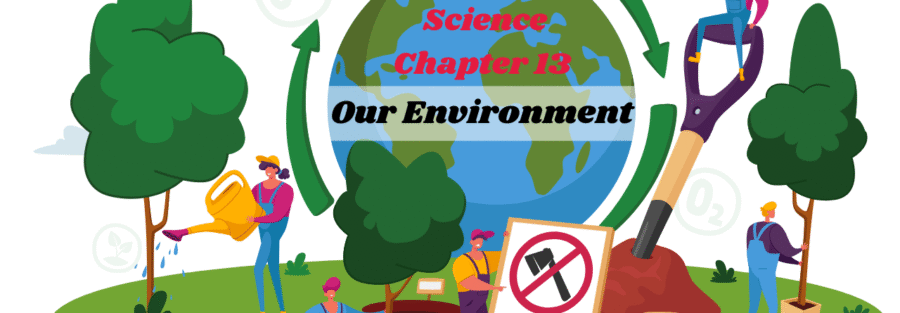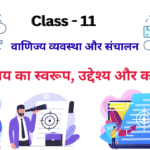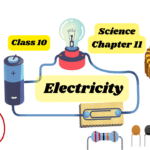Our Environment – Short Notes
1. Introduction to Environment
- Environment: The physical and biological world around us where we live.
- Components:
- Biotic: Living components (e.g., plants, animals).
- Abiotic: Non-living components (e.g., air, water, soil).
2. Ecosystem
- Definition: A functional unit of living and non-living components that interact.
- Components:
- Producers: Green plants (make food through photosynthesis).
- Consumers: Animals that eat plants or other animals.
- Herbivores: Primary consumers
- Carnivores: Secondary/Tertiary consumers
- Decomposers: Microorganisms (e.g., bacteria, fungi) that decay dead organic matter.
3. Food Chain and Food Web
- Food Chain: A single path of energy flow.
- Example: Grass → Rabbit → Snake → Eagle
- Food Web: Interconnected food chains.
- Energy Flow: 10% Law – Only 10% of energy is transferred from one trophic level to the next.
4. Trophic Levels
- First Level: Producers (Plants)
- Second Level: Primary Consumers (Herbivores)
- Third Level: Secondary Consumers (Carnivores)
- Fourth Level: Tertiary Consumers (Top Carnivores)
5. Waste Management
- Biodegradable Waste: Can be decomposed naturally (e.g., food waste, paper).
- Non-Biodegradable Waste: Cannot be decomposed naturally (e.g., plastic, metals, glass).
6. Biogeochemical Cycles
- Carbon Cycle: Exchange of CO₂ between atmosphere and living beings.
- Photosynthesis: Absorption of CO₂
- Respiration: Release of CO₂
- Oxygen Cycle: Balance of O₂ between atmosphere and living beings.
- Nitrogen Cycle: Conversion of atmospheric nitrogen into useful compounds.
- Nitrogen Fixation: By Rhizobium bacteria.
7. Ozone Layer
- Location: Stratosphere
- Importance: Protects from harmful UV rays of the sun.
- Depletion: Caused by chemicals like CFCs (Chlorofluorocarbons).
8. Methods of Waste Disposal
- Landfill: Burying underground
- Recycling: Reusing materials
- Composting: Converting organic waste into manure
- Sewage Treatment: Treating wastewater
9. Environmental Issues
- Air Pollution: CO₂, SO₂, CFCs
- Water Pollution: Industrial waste, pesticides
- Soil Pollution: Plastics, chemicals
- Global Warming: Due to greenhouse gases
10. Sustainable Development
- Using resources in a way that meets present needs without compromising the ability of future generations to meet their own needs.
Important Diagrams
- Food Chain and Food Web
- Carbon Cycle
- Nitrogen Cycle
- Ozone Layer Depletion
Exam Tips:
- Understand food chains and energy flow.
- Practice diagrams of biogeochemical cycles.
- Differentiate between biodegradable and non-biodegradable waste.
कक्षा 10 विज्ञान – अध्याय 13: हमारा पर्यावरण – संक्षिप्त नोट्स
1. पर्यावरण का परिचय
- पर्यावरण: हमारे चारों ओर का भौतिक और जैविक संसार जिसमें हम रहते हैं।
- घटक:
- जैविक: सजीव घटक (जैसे पौधे, जंतु)।
- अजैविक: निर्जीव घटक (जैसे हवा, पानी, मिट्टी)।
2. पारितंत्र (Ecosystem)
- परिभाषा: जैविक और अजैविक घटकों की एक कार्यात्मक इकाई।
- घटक:
- उत्पादक: हरे पौधे (प्रकाश संश्लेषण द्वारा भोजन बनाते हैं)।
- उपभोक्ता: जंतु जो उत्पादकों या अन्य जंतुओं को खाते हैं।
- शाकाहारी: प्राथमिक उपभोक्ता
- मांसाहारी: द्वितीयक/तृतीयक उपभोक्ता
- अपघटक: सूक्ष्मजीव (जैसे बैक्टीरिया, कवक) जो मृत जैव पदार्थों को सड़ाते हैं।
3. खाद्य श्रृंखला एवं खाद्य जाल
- खाद्य श्रृंखला: ऊर्जा के प्रवाह का एक-directional path।
- उदाहरण: घास → खरगोश → साँप → बाज
- खाद्य जाल: कई अंतर्संबंधित खाद्य श्रृंखलाओं का जाल।
- ऊर्जा प्रवाह: 10% law – एक पोषी स्तर से अगले स्तर में केवल 10% ऊर्जा स्थानांतरित होती है।
4. पोषी स्तर (Trophic Levels)
- प्रथम स्तर: उत्पादक (पौधे)
- द्वितीय स्तर: प्राथमिक उपभोक्ता (शाकाहारी)
- तृतीय स्तर: द्वितीयक उपभोक्ता (मांसाहारी)
- चतुर्थ स्तर: तृतीयक उपभोक्ता (शीर्ष मांसाहारी)
5. अपशिष्ट प्रबंधन
- बायोडिग्रेडेबल अपशिष्ट: प्राकृतिक रूप से सड़ने योग्य (जैसे खाद्य अवशेष, कागज)।
- नॉन-बायोडिग्रेडेबल अपशिष्ट: प्राकृतिक रूप से न सड़ने योग्य (जैसे प्लास्टिक, धातु, काँच)।
6. रासायनिक चक्रण
- कार्बन चक्र: CO₂ का वायुमंडल और जीवों के बीच आदान-प्रदान।
- प्रकाश संश्लेषण: CO₂ का अवशोषण
- श्वसन: CO₂ का निष्कासन
- ऑक्सीजन चक्र: वायुमंडल और जीवों के बीच O₂ का संतुलन।
- नाइट्रोजन चक्र: वायुमंडलीय नाइट्रोजन का उपयोगी यौगिकों में परिवर्तन।
- नाइट्रोजन स्थिरीकरण: राइजोबियम जीवाणु द्वारा।
7. ओज़ोन परत
- स्थान: समताप मंडल (स्तरतोपौज़)
- महत्व: सूर्य की हानिकारक UV किरणों से रक्षा करती है।
- क्षरण: CFCs (क्लोरोफ्लोरोकार्बन) जैसे रसायनों के कारण।
8. अपशिष्ट निपटान के तरीके
- लैंडफिल: भूमिगत दबाना
- रीसाइक्लिंग: पुनर्चक्रण
- कम्पोस्टिंग: जैविक अपशिष्ट को खाद में बदलना
- अपशिष्ट जल उपचार: सीवेज ट्रीटमेंट
9. पर्यावरणीय समस्याएँ
- वायु प्रदूषण: CO₂, SO₂, CFCs
- जल प्रदूषण: औद्योगिक अपशिष्ट, कीटनाशक
- मृदा प्रदूषण: प्लास्टिक, रसायन
- ग्लोबल वार्मिंग: ग्रीनहाउस गैसों के कारण
10. सतत विकास
- संसाधनों का इस प्रकार उपयोग कि भविष्य की पीढ़ियों की आवश्यकताओं से समझौता न हो।
महत्वपूर्ण आरेख
- खाद्य श्रृंखला एवं खाद्य जाल
- कार्बन चक्र
- नाइट्रोजन चक्र
- ओज़ोन परत क्षरण
परीक्षा सुझाव:
- खाद्य श्रृंखला और ऊर्जा प्रवाह को समझें।
- रासायनिक चक्रों के चित्र बनाना सीखें।
- बायोडिग्रेडेबल और नॉन-बायोडिग्रेडेबल में अंतर याद रखें।



